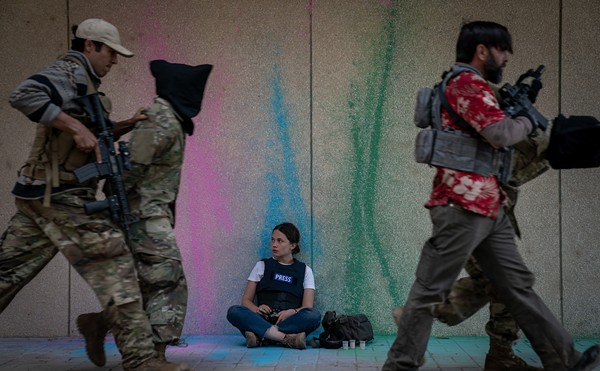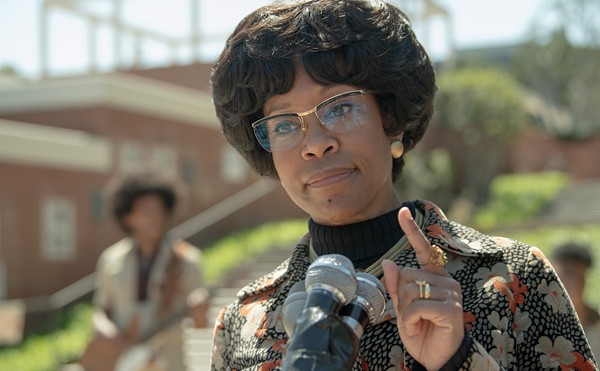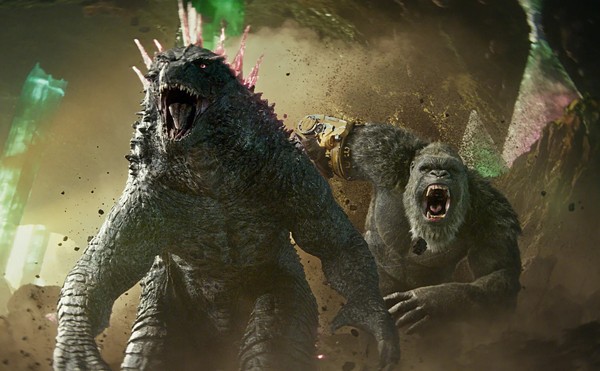For Keane, portrayed with frightening intensity by Damian Lewis (he was Major Winters in the HBO war series Band of Brothers), the overwhelming issue is the abduction, some months earlier, of his six-year-old daughter, Sophie. It happened right there in Port Authority, as his oversight waned for just a moment. Endlessly retracing his steps, replaying his every thought to agonizing lengths, this non-medicated, uncared-for single father is now driving himself stark-raving mad with guilt and grief.
Or is he? In his earlier film festival favorite, Clean, Shaven (1994), Kerrigan gave us a harrowing look at a delusional schizophrenic who returns to his hometown searching for his daughter, and Keane employs the same kind of dramatic ambiguities as its predecessor. Has the trauma of Sophie's sudden disappearance metastasized into Keane's madness? Or is Sophie the product of madness itself, a figment of his tortured imagination? Kerrigan leaves that question unanswered, which is just as well. The dungeon of psychosis has to be a very dark place, and the horrible complexities that terrorize the inmates cannot be easily explained away. For every neatly wrapped happy ending in the casebook of mental illness -- witness the Hollywood uplift of A Beautiful Mind -- we should probably be unsettled three or four times by the cruel messiness of real life, by portraits of obstinate disorder like Spider and The Woodsman and Keane.
For his part, Kerrigan never shrinks from the task of discomfiting us. His wretched hero dominates almost every frame of this 90-minute film, and director of photography John Foster stalks and crowds Lewis mercilessly, jamming a jittery, handheld camera into his face, into his ears, into the weary stoop of his shoulders. Thanks to long takes unrelieved by editing, we virtually invade Keane's troubled soul, much as the Dardennes brothers, from Belgium, barged into the grief-stricken soul of the carpentry instructor at the heart of their memorable drama The Son. Halfway through Keane, you may find yourself gasping for air and craving space. Extreme closeups -- dozens of them, back-to-back -- have rarely been deployed to such powerful effect. For Lewis, this is a tour de force of movie acting. Listen as he recites his sad biography in a flat monotone, or watch while he sings crazily along with the old Four Tops anthem "I Can't Help Myself" as it blares from a jukebox, and you'll get a profound jolt of what it means to be insane. But for the audience, this can also be an ordeal. Keane's very presence grows exhausting -- as it must.
Does hope exist for him? Possibly. Keane's terror comes and goes (at times he seems perfectly lucid and fully in charge of his emotions), and Kerrigan provides him with a couple of intriguing choices. Jobless and subsisting on disability checks, he occasionally has the wherewithal to score a bindle of coke, to have squalid sex in a nightclub restroom, to slam a couple of warm vodkas in a dive. Just as dangerous, perhaps, he also gets the opportunity to help out a weary single Mom (Amy Ryan) and her seven-year-old daughter, Kira (Abigail Breslin), at the gloomy welfare hotel in New Jersey where they all find themselves. The mother's not the real issue here, of course -- the daughter is. The possible surrogate. Tormented by his memories (or his delusions), Keane takes the kid under his wing, but whether that wing belongs to a vulture or a dove remains very much in question. Keane is self-destructive, obviously deranged and, as we know, obsessed with the vanished Sophie -- a combustible mix of elements that neither the child nor her mother is in any position to understand.
Enough. As a portrait of mad despair, Keane is so compelling that attentive viewers may be tempted to interpret it as a generalized vision of contemporary urban malaise. But it might be wise to keep the focus narrower and lock in on the claustrophobic prison of one victim's heart. There's plenty to see and learn right there. Lodge Kerrigan's next film, he says, will be a horror movie. But it's hard to imagine horror that runs any deeper or scarier than this.





